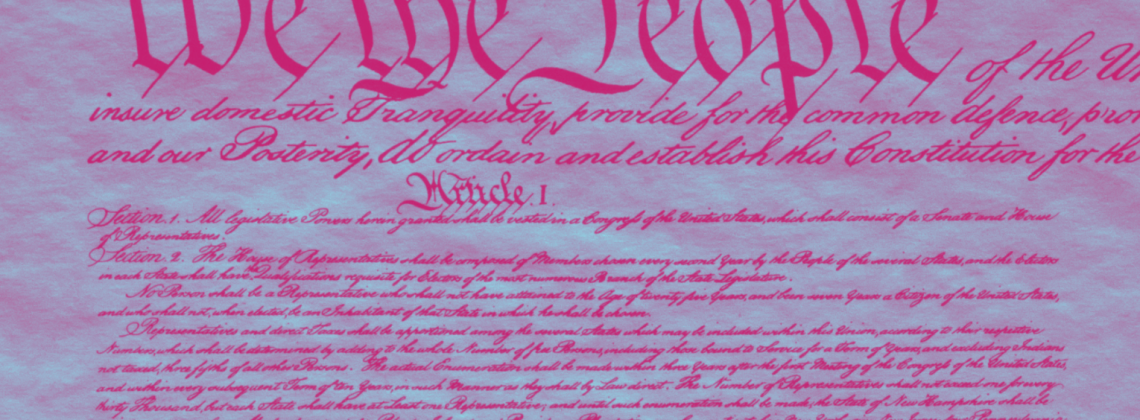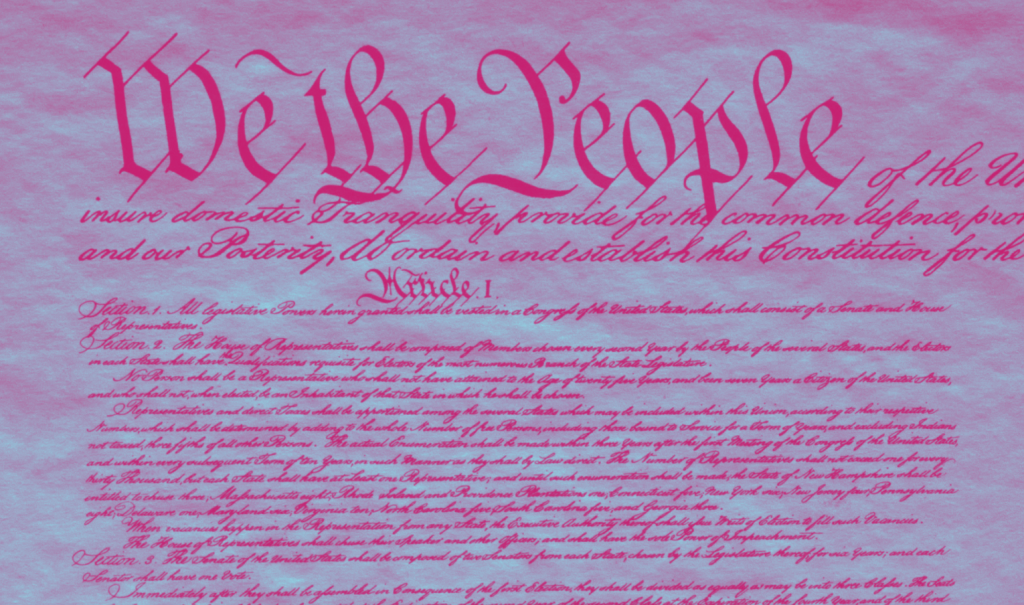

Yuval Levin aims for institutional reform. He needs a different target.
American Covenant: How the Constitution Unified Our Nation—and Could Again by Yuval Levin. Basic Books, 2024. 352 pp., $32.00
In October 2024, shortly before the presidential election, J.D. Vance was asked in an interview whether he and his running mate will defend the Constitution, regardless of the election’s outcome. Vance answered insistingly in the affirmative. The conversation was telling—and it was far from the only such conversation during the election season. Loyalty to the Constitution remains the presumed touchstone of trust between a president and the American people.
In American Covenant: How the Constitution Unified Our Nation—and Could Again, Yuval Levin invites us to explore the philosophical and historical significance of this document that has guided the American experiment since 1788. Nothing about the Constitution has ever been simple. It is one thing to get a diverse population to unite in revolt against a common enemy, the British Crown. It is another to get citizens to agree on how they will live together after the revolution. Levin believes that this very complexity is part of the genius of the Constitution. Furthermore, treasuring this complexity is urgently relevant in our present moment of paralyzing polarization.
Levin explores the multiple structures of the Constitution designed to ensure the persistence of the wide-ranging and sometimes contradictory values at the core of the new Republic. Under the guiding hand of James Madison, the Constitution establishes a framework of time-intensive checks and balances; all of them draw on power to check the abuse of power, and all intend to contain diversity without eliminating it.
This balancing act is perennially at risk. Yet failing to maintain it would ultimately threaten the very unity the Constitution was intended to preserve. Such was the case with slavery—that issue that went (knowingly) unresolved in the initial framing of the Constitution in the name of national unity. It remained unresolved until the sixteenth President, Abraham Lincoln, declared the Emancipation Proclamation by Executive Order. Since then, whether in the name of moral urgency or national emergency, the careful balance of power structured by the Constitution has been continually compromised, argues Levin, by a series of progressive causes and their activist agents in the executive and judicial branches.
The irony, for Levin, is that the legislative branch of government that is best equipped to allow for deliberation, balancing of differing interests, and the measured pursuit of multiple goods, has been sidelined in the name of efficiency and replaced by a growing body of executive orders, bureaucratic regulations, and judicial precedents. And yet, executive orders and court decisions cannot, by their very nature, embody complexity, tension, and multiple interests. As a result, the quest for solutions to pressing national issues fosters a sense of high-stakes polarization.
Levin pleads with readers to be more appreciative as citizens of the Constitution’s intent for politics to move slowly. He wants to see the flourishing of multiple levels of government, vibrant voluntarism motivated by private citizens, and of course individual liberty and personal agency. Whenever we ask the federal government to advance a moral principle or argue for a new “right” that demands collective enforcement, we are asking for more centralization—and fostering the asymmetric accumulation of power that the Constitution labored so assiduously to prevent.
American Covenant offers a compelling analysis of the current pervasive polarization in American society. In the process, readers are treated to a clear and comprehensive understanding of the Constitution and the politics that went into its creation. Levin calls readers to a ruthless realism about our country’s founding. He asserts that diversity, not unity, has been the norm in America throughout its history and not an idiosyncratic feature of this present moment.
His analysis of our contemporary challenges is more helpful than his proposed solutions. While Levin offers specific recommendations for how America might return to a place where the legislative branch plays its intended central role, there seems little likelihood of this happening.
Levin seems to ignore that there may be good reasons for wanting to bypass the ponderous journey of proposed reform through the legislative process. History suggests that the operation of liberal democracy may be a luxury that depends on relative social and political equilibrium—where at least a majority of citizens is more certain and afraid of the pain of change than of the uncertain hope that change might offer. We have repeatedly seen the failure of infant liberal democracies to deliver essential changes in time to fulfill the promises and hopefulness that had brought them to power in the first place. Think of Russia in the summer of 1917. Or the Weimar Republic in the 1920s. Or, more recently, the Middle East during the Arab Spring in the early 2010s.
Liberal democracies are vulnerable not only to those who mean well—those who desire to use their position and influence for the good of others and the state. They are also vulnerable to those who simply want power and for whom the tools of liberal democracy are merely the means of obtaining and legitimizing their own power. Think of Napoleon’s use of the plebiscite in the early days of post-Bourbon France. Or the wide variety of populist moments in our own national history, in Europe between the world wars, and throughout the world wherever hopeful promises bring to power regimes that will not deliver on those promises.
And so Levin issues a challenge to all those who continue to hold hope in the American experiment. It is not enough to look back wistfully at an earlier time and seek to bring it back. The historical process does not work like that. In the current moment, some might see hope in the new Department of Government Efficiency that wants to reduce the burden of bureaucracy and regulation that has been the result of disproportionate growth of the executive branch. How do we ensure that this doesn’t become one more instrument of partisan politics, or a justification for further executive overreach or personal aggrandizement? I am not sure, and I don’t feel hopeful about this example.
Instead, the most realistic hope for renewing the American Dream will come from citizens who refuse to give up on their own responsibility to seek the good of their neighbors; who commit to doing the difficult, imaginative, and sometimes risky work of building bridges across differences to pursue practical projects that promote local well-being; who continue to see each person they encounter not as an abstraction of identity or party politics but as a complex reality of history, story, and hope; who see other citizens as endowed with a mysterious but undeniable dignity that comes from beyond this world and is worthy of our focused attention and grace-filled hospitality.
Shirley A. Mullen (PhD) is President Emerita of Houghton College and longtime history professor. Her most recent book is Claiming the Courageous Middle: Daring to Live and Work Together for a More Hopeful Future (2024).
Wow, this article is so good: rich with insight, rigorous and substantive, and beautful in its clarity, too.